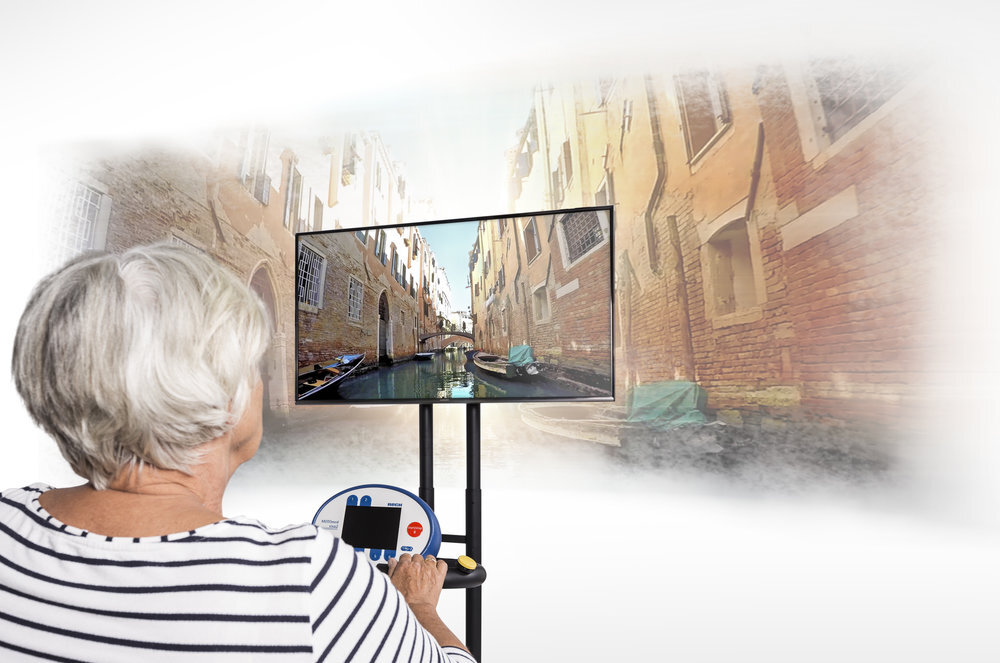FES Cycling and improving health after spinal cord injury
In a recent article we pointed out that physically disabled people are the least active group in society but make up around a fifth of Britain's population - almost 14 million people. According to Sports England, disabled people are twice as likely to be inactive as able-bodied people.
Cycling combined with functional electrical stimulation (FES Cycling) of the paralysed leg muscles was first demonstrated during the 1980s and this has since been most widely practiced by people with a spinal cord injury. It has also been applied successfully in people with lower-limb dysfunction in a range of other neurological populations such as adults after Stroke, with MS, Transverse Myelitis and in children with cerebral palsy.
A RehaMove FES Cycling system based ont eh MOTOmed muvi
We have worked with one fo the leading FES Cycling systems - the RehaMove FES Cycling system from Hasomed for more than 10 years now and indeed the majority of our home-based users are using this approach to exercise following a spinal cord injury.
At the beginning we worried that clients would purchase a system and then not actually continue to use them. There will always be a few that don’t stick with the routine, just as there are lots of gym members that pay the fee but don’t attend the gym. This has actually not been a problem for the most part.
The reason for the greater adoption by spinal cord injured persons is influenced to some extent by the fact that the technology is often provided as part of a medico-legal process following a catastrophic injury. The cost of equipment is often out of the reach of those who do not have insurance or a medico-legal claim.
A range of physiological benefits have been observed in clinical and research studies of subjects with a spinal cord injury, including improvements in cardiopulmonary fitness, muscle strength, and bone density.
From experience you and I know that such benefits are not in themselves great motivators - many people need a bit of a nudge to exercise and stick at it.
Two recent options for the RehaMove FES Cycling system we think improve the overall experience for users
Many of our own clients make use of the Sequence Mode software feature which is now included as standard with all new systems.
This powerful software allows the FES unit to be used independently from the bike and as the name of the software suggests it can be used to set up powerful sequences of muscle stimulation to support various forms of exercise. Our innovative clients use this to develop exercise routines that are highly personalised to their individual needs. For example, Sequence Mode is commonly used to assist with “sit to stand exercises”, shoulder stabilisation and even FES rowing. This week a client mentioned he had developed his own “situp (from lying) and stand exercise” with sequence mode. This is an intensive exercise carried out for repetitions by a paraplegic client.
Bike Labyrinth provides a virtual reality landscape to augment cycling
What Sequence Mode does by allowing a broader perspective on how to get active with FES, is ensure greater commitment to exercise.
Another recent addition to the product range is the Bike Labyrinth option that “gamifies” FES Cycling by providing a virtual reality scape of a cycling route. As the user pedals their RehaMove bike they can choose to follow one of more than two hundred interactive cycle route from around the world. This provides an engaging experience for the user and therefore much more likely to be something enjoyable and less of a chore.
We know that using a RehaMove FES Cycling system is good for long term health but we have often said it’s not a great spectator sport. Adding these new features and options greatly enhances the flexibility and enjoyment in using the system.


